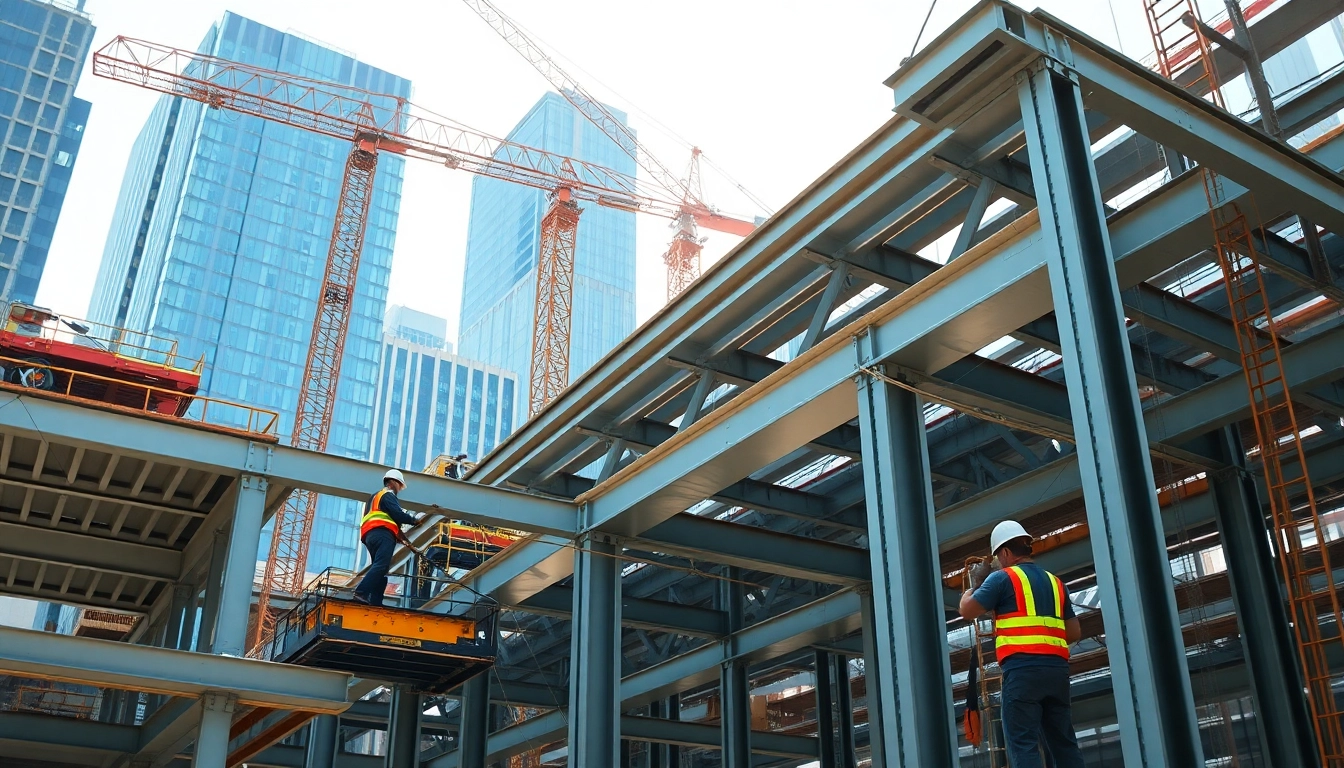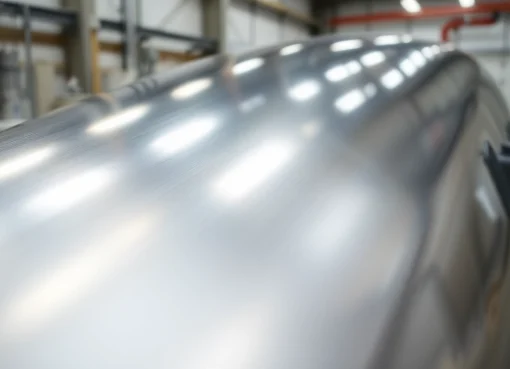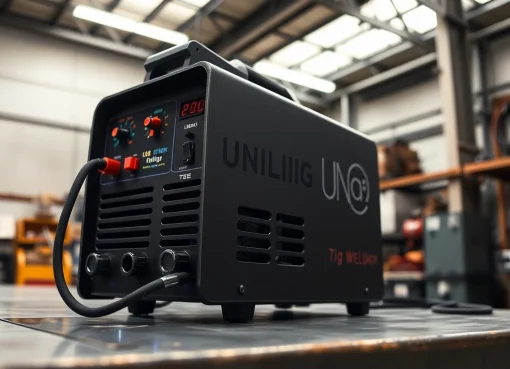Expert Insights on Structural Steel Installation for Modern Construction Projects

Understanding Structural Steel Installation
What is Structural Steel Installation?
Structural steel installation refers to the strategic alignment and connection of steel components used to create strong and stable frameworks for buildings, bridges, and other structures. This process encompasses various tasks, from the fabrication of steel pieces to their assembly on-site, ensuring that they meet architectural designs and load-bearing requirements. There are several benefits to utilizing structural steel installations in construction, including its strength, durability, and flexibility, alongside a faster construction timeline. Comprehensive knowledge of these processes is essential for engineers, architects, and construction managers alike.
The Importance of Structural Steel in Construction
Structural steel is a crucial element in modern construction. Its key advantages, such as high tensile strength, adaptability, and resistance to environmental factors, make it a preferred choice for constructing a variety of structures. Unlike other materials like wood or concrete, which may have limitations regarding weight and design flexibility, steel allows for larger spans and innovative designs while ensuring safety and longevity. Furthermore, the use of structural steel installation promotes sustainability, as recycled steel can be utilized effectively in new constructions, minimizing waste and mitigating environmental impacts.
Overview of Structural Steel Components
Structural steel is composed of various elements, each serving a specific purpose within the assembly of the structure. Key components include:
- Beams: Horizontal structural elements that support loads and distribute weight across a span.
- Columns: Vertical members that bear the load of beams and transfer weight down to the foundations.
- Bracing: Used to stabilize a structure against lateral forces.
- Connections: Bolts, welds, or rivets that join structural members together to form a cohesive structure.
- Decking: Sheets that may serve as floors or roofs, often laid across beams.
Planning for Structural Steel Installation
Key Considerations During the Planning Phase
Effective planning is paramount for the successful installation of structural steel. Several considerations should be taken into account:
- Design Specifications: Ensure alignment with architectural plans and structural integrity requirements.
- Timeframe: Establish a clear timeline for project milestones to optimize labor and resource scheduling.
- Site Conditions: Assess the installation environment for accessibility, space constraints, and any existing structures.
- Material Availability: Source materials in advance to prevent delays due to shortages or extended lead times.
Permits and Regulations for Structural Steel Installation
Before commencing a structural steel installation project, it is imperative to obtain the necessary permits and adhere to the local regulations governing construction activities. These regulations often dictate safety protocols, design standards, and environmental compliance. Engaging with local authorities early in the project allows for a smoother permitting process and ensures all operational methodologies will comply with applicable codes, thus avoiding costly project delays.
Budgeting for Structural Steel Projects
Budgeting effectively for a structural steel installation project is critical to its overall success. The budget should encompass:
- Material Costs: This includes the purchase of steel, coatings, and other materials.
- Labor Costs: Assess the workforce required for installation and any specialized labor for complex tasks.
- Equipment Rental: Any cranes or machinery needed for hoisting or aligning steel components should be considered.
- Contingency Funds: Setting aside contingency funds is essential to cover unforeseen expenses throughout the project lifecycle.
Best Practices for Structural Steel Installation
Effective Techniques for Installation
Implementing effective installation techniques ensures a robust and reliable structure. Key methods include:
- Pre-Fabrication: Off-site fabrication of structural components enhances precision and minimizes on-site construction time.
- Quality Control: Regular inspections and testing of materials and connections strengthen quality assurance measures.
- Proper Sequencing: Organize the installation sequence to maximize efficiency, ensuring each element is correctly positioned before proceeding.
Common Challenges and Solutions
While installing structural steel, teams may encounter several challenges:
- Weather Conditions: Adverse weather can delay installation. Solutions include scheduling flexibility and contingency planning.
- Alignment Issues: Misalignment can lead to structural weaknesses. Employing precise measurement tools and regular checks can mitigate these risks.
- Safety Hazards: Risks associated with heavy lifting and heights. Adhering to safety regulations and providing adequate training helps protect workers.
Safety Protocols During Installation
Maintaining a strong safety culture is essential during structural steel installation. Protocols should include:
- PPE Requirements: Ensure that all workers wear appropriate personal protective equipment.
- Clear Communication: Establish hand signals or radio communication for coordination during lifting and assembly.
- Emergency Plans: Have clear emergency response plans in place for accidents or structural failures.
Tools and Equipment for Structural Steel Installation
Essential Tools for Structural Steel Projects
A range of tools and equipment are essential for effective structural steel installations:
- Cranes: For hoisting and positioning heavy steel components.
- Welders: For joining steel sections together on-site.
- Torque Wrenches: Ensuring the correct bolt tension during connections.
- Measuring Tools: Levels, tape measures, and laser guides for accuracy in alignment.
Choosing the Right Equipment
Selecting the appropriate equipment is crucial to the success of a structural steel installation project. Key considerations include:
- Capacity: Ensure that the equipment can handle the weight and dimensions of the steel components.
- Mobility: Choose equipment that can maneuver easily around the construction site.
- Operator Skill Level: Ensure that operators are trained and certified for the equipment being used.
Maintaining Tools for Optimal Performance
Regular maintenance of tools and equipment is essential for maximizing performance and safety. This includes:
- Routine Inspections: Conduct regular checks for wear and tear and address any issues immediately.
- Lubrication: Properly lubricate moving parts to prevent breakdowns and ensure smooth operations.
- Cleanliness: Keep work areas clean and tools free of debris to enhance functionality and safety.
Evaluating Success in Structural Steel Installation
Performance Metrics for Steel Projects
Measuring the success of a structural steel installation project requires a thorough evaluation of specific performance metrics, including:
- Schedule Adherence: Tracking whether the project met its timeline and identifying areas for improvement.
- Budget Compliance: Assessing actual costs against the projected budget to evaluate financial performance.
- Quality Assurance: Evaluating the structural integrity through inspections and compliance with design specifications.
Post-Installation Inspections
Conducting thorough post-installation inspections is critical to ensure the structure’s safety and functionality. Key elements include:
- Visual Inspections: A visual assessment for obvious defects or discrepancies in the installation.
- Load Testing: Perform load tests to verify the structural adequacy under expected loads.
- Documentation Review: Check records for compliance with all design and safety standards.
Feedback and Continuous Improvement
Collecting feedback from the installation team and stakeholders is vital for recognizing strengths and identifying areas for improvement in future projects. Implementing a continuous improvement approach may involve:
- Surveys: Distributing surveys to gauge team satisfaction and gather insights on challenges faced.
- Review Meetings: Conducting wrap-up meetings post-project to discuss what worked well and what didn’t.
- Training Programs: Establishing training programs based on identified skills gaps and lessons learned.



Leave a Comment